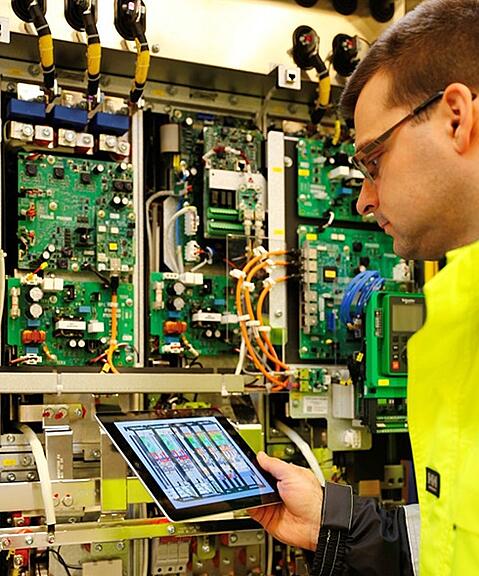MICE Classifications Deciphered: What You Need to Know
So many cabling and connectivity options, so many decisions and so little time to make them: How do you know where to begin when selecting a solution that will thrive in your unique environment?
MICE classifications are a good place to start. Developed as a team effort by ODVA, IEC and TIA, MICE classifies four environmental elements across three categories of severity. (It might seem a little confusing, so let’s break it down.)
The four environmental elements, which make up the “MICE” acronym, include:
- M: mechanical (shock, vibration, crush, impact, tensile force, flexing, etc.)
- I: ingress (such as water and dust in forms of liquid and particulates)
- C: climatic/chemical (temperature, UV exposure, humidity, exposure to contaminants such as oil or gas, etc.)
- E: electromagnetic (surges, EMI/RFI interference, magnetic fields, transients, etc.)
In a MICE classification, a number appears after each of the four letters. The number represents the “severity” of exposure to the environmental factor:
- 1: low severity (typically found in commercial office settings)
- 2: medium severity (typically found in light industrial settings)
- 3: high severity (typically found in heavy industrial settings)
Basically, the higher the number, the harsher the environment. When any of the four elements is rated at 2 or above, the environment is considered an industrial environment. A common misconception is that industrial environments refer only to places like production plants and factories. In fact, industrial environments can mean anywhere that is not an air-conditioned, office-like space. This can be outside, or in a kitchen with grease and heat.
What “Severity” Really Means
Parameters for each of the four environmental elements are represented in the MICE table.
When you need a cabling or connectivity component that meets certain specifications, you can use the table to choose the environmental condition(s) of concern (M, I, C or E). From there, you can find the level of protection you want (1, 2 or 3) based on what’s happening in your specific environment.
Let’s consider temperature (part of the “C” in a MICE classification). If the ambient temperature in your environment ranges between -10°C to +60°C, then it falls within the C1 class (meaning the temperatures aren’t too extreme or severe). If the ambient temperature ranges between -25°C to +70°C, then that puts your environment in the C2 classification. If your environment experiences ambient temperature fluctuations between -40°C to +70°C, then you’re dealing with a C3 MICE classification (the most severe)
| Climactic/Chemical | C1 | C2 | C3 |
|---|---|---|---|
| Ambient Temperature | -10oC to +60oC | -25oC to +70oC | -40oC to +70oC |
Here is another example:
| Mechanical | M1 | M2 | M3 |
|---|---|---|---|
| Shock/bump | |||
| Peak acceleration | 40 ms-2 | 100 ms-2 | 250 ms-2 |
| Vibration | |||
| Displacement amplitude | 1.5 mm | 7.0 mm | 15.0 mm |
| Acceleration amplitude | 5ms-2 | 20 ms-2 | 50 ms-2 |
A Real-World MICE Example
Let’s take a look at a sample MICE rating: M3 I1 C2 E3. What is it telling you?
This rating shows us that this environment exposes cabling components to severe mechanical impacts (vibration, etc.), very little exposure to ingress, no immersion, medium exposure to climatic or chemical factors and severe exposure to electromagnetic interference.

Knowing this information helps you select the right cabling infrastructure to properly operate in your environment—no matter the conditions. In this case, to ensure suitable performance from your cabling system, you would want to choose components that are built to withstand vibration, strong crush, impact force, or constant bending and flexing, tolerate moderate temperatures and resist EMI or RFI interference within close proximity or of high intensity. Deploying a solution that isn’t designed and constructed to withstand these conditions will lead to frustration, downtime and high cost of total ownership.
Industrial-Grade vs. Commercial-Grade Cables and Connectors
Cabling and connectivity products designed for use in commercial buildings aren’t meant for use in industrial environments.
Unlike industrial-grade cables, commercial-grade cables aren’t exposed to any of the following conditions when being tested for performance:
- Abrasion
- Cold bend
- Cold impact
- Crushing
- Cut-through
- High temperatures
- Oil immersion
- UV rays
- Water immersion
Why aren’t they tested in these conditions? Because they were never intended to encounter them.

Using a commercial-grade cable in an industrial environment is = like taking your golf cart out onto a busy highway. Golf carts are designed and tested for an open, smooth, safe and low noise riding experience at a much lower speed locally. It wasn’t tested for safety or performance over long distances or high speeds for long periods of time—because it was never intended to operate under these conditions. If you push it to the limit, you compromise safety, damage equipment and ultimately suffer from halted performance.
You may notice a difference when comparing the upfront costs of industrial-grade and commercial-grade cabling. There’s a good reason: Industrial-grade cables and connectors take more time to design and test and cost more to manufacture with higher grade materials or more layers of protection. The major savings are realized during the useful life of these cables and connectors. Cost adds up quickly when you consider the time and money spent dealing with downtime and replacement of components that don’t hold up.
In fact, the physical layer including cabling and connectivity contributes to 35% of network issues. This percentage could be reduced considerably by simply using the right products in the right environments.
Using the MICE Table to Select Belden Products
Although it seems simple and straightforward, we see many industrial plants still using non-industrial-grade solutions—and suffering unnecessarily as a result.
For instance: Deploying commercial-grade cables in a location that ends up rubbing against nearby robotic equipment, or using a regular plastic RJ45 connector that interacts with the oil or gas present in the area, they’ll need to be replaced prematurely because they weren’t built to withstand abrasion or chemicals. Instead of dealing with this continued stress, use a cable with an anti-abrasion jacket, or a ruggedized metal-body connector. They will save you lots of time—and money!
If you need help translating MICE classifications to Belden solutions that will perform in specific conditions, we can help: Send our team a note. We can guide you through the MICE table and help you find exactly what you need.
